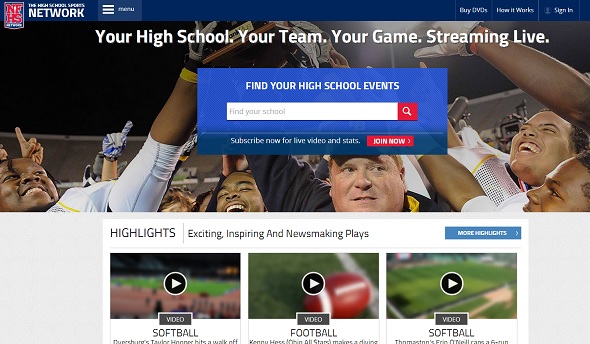
Title IX Continues to Fuel Growth of Girls and Women’s Sports, Olympic Dominance
By
Karissa Niehoff
NFHS Executive Director
September 24, 2021
To say that American female athletes dominated the recent Olympics in Tokyo would be an understatement.
Among the 66 medals earned by American female Olympians – most by any country in the history of the Games – were gold-medal performances by the U.S. basketball, volleyball, water polo and beach volleyball teams. Eighteen medals were earned by the U.S. women swimmers, female track and field athletes claimed 15 medals, and the U.S. women’s softball and soccer teams won silver and bronze medals, respectively.
In the past 30 years of the Olympic Games, the United States has dominated the women’s team sports of basketball (nine golds), soccer (four golds, one silver, one bronze) and softball (three golds, two silvers) — not to mention the untold number of medals in track and field. And this past summer, the U.S. women’s volleyball team claimed its first gold medal.
These performances by some of our nation’s most skilled female athletes never would have been possible without the passage of Title IX and the offerings of these sports through our nation’s schools. With the chance to play afforded by the landmark Title IX legislation in 1972, girls participation in several high school sports skyrocketed in the years that followed.
When the NFHS conducted its first participation survey in 1971, basketball and outdoor track and field were the primary girls sports, comprising about two-thirds of the 294,000 total. However, with the opportunity to play additional sports, girls flocked to volleyball and softball first, along with cross country and eventually soccer.
Soccer, in fact, has had the most remarkable growth. In 1971, only 700 girls were playing high school soccer. Twenty-five years later, that number had climbed to almost 210,000; and as the 50th anniversary of Title IX approaches, there are now almost 400,000 girls playing high school soccer – a staggering 56,200 percentage increase in 50 years. Soccer now ranks fourth in popularity among girls high school sports – all because of that opportunity in 1972.
There are many other success stories, however. The pre-Title IX survey in 1971 indicated that 1,719 girls were participating in cross country. With increases every year until 2015, today, there are 219,345 girls competing in high school programs and the sport ranks sixth in popularity.
Although participation numbers have leveled a bit the past 10 years, fast-pitch softball is another sport that flourished after the passage of Title IX. With fewer than 10,000 participants in 1971, the numbers quickly rose to 220,000 by 1985 and 343,000 by 2000, and softball is currently fifth among girls sports with 362,038 participants.
Since track and field and basketball were the primary sports in the early days of girls sports programs, increases in those sports have not been as dramatic; however, they remain the first and third most-popular sports, respectively, today. Volleyball, however, much like soccer, continues its upward climb.
Without a doubt, volleyball has seen the steadiest increases among girls high school sports the past 50 years. After starting with 17,952 participants in 1971, the numbers jumped to 300,810 by 1990 and 409,332 by 2010 and 452,808 by 2018. During its climb, volleyball surpassed basketball as the No. 2 girls sport.
And among the top six girls sports from 2010 to 2018 (numbers are not available the past two years due to the pandemic), volleyball has gained the most participants (43,476), followed by soccer (32,549). And all of this has occurred thanks to legislation passed in 1972 that was not fundamentally meant to address opportunities for girls to participate in high school sports.
The NFHS is leading a yearlong celebration of the 50th anniversary of Title IX, which officially occurs on June 23, 2022. “Title IX at 50 – Celebrating and Growing Opportunities” is highlighting the law’s impact by celebrating the inspirational individuals and landmark moments in the history of Title IX, and continuing to grow the educational and competitive opportunities for the future.
More information, including a Title IX Timeline, Title IX Milestones, The History and Importance of Title IX, Title IX Fact Sheet, Title IX Frequently Asked Questions and several Title IX videos, can be accessed on the NFHS Website.
Dr. Karissa L. Niehoff is beginning her fourth year as executive director of the National Federation of State High School Associations (NFHS) in Indianapolis. She is the first female to head the national leadership organization for high school athletics and performing arts activities and the sixth full-time executive director of the NFHS. She previously was executive director of the Connecticut Association of Schools-Connecticut Interscholastic Athletic Conference for seven years.

NFHS Network Rooted in Our Back Yards
August 28, 2014
By Jack Roberts
MHSAA Executive Director
Throughout my nearly 28-year tenure with the MHSAA, I have been a consistent and outspoken critic of our national organization, the National Federation of State High School Associations (NFHS), whenever it attempted an initiative that I saw purposed more for its own promotion than as a needed service for its member associations and their member schools.
When its strategy for service was to promote a “national presence” for the NFHS, I objected. I have never felt that national tournaments or national telecasts would be of the slightest benefit to 99 percent of the MHSAA’s member schools; and worse, I have always believed that those initiatives would tend to corrupt the one percent involved.
So it may have come as a surprise to some of my colleagues in this state and my counterparts across the country when I became an early advocate of the NFHS Network and now serve as the network’s first president.
The definitive difference between the NFHS Network and earlier talk of national tournaments and telecasts is that the network’s thrust is local, not national. In fact, it’s hyper-local.
The heart of the NFHS Network consists of the season-ending tournaments of statewide high school associations across the U.S. The NFHS Network produced Internet broadcasts of at least the culminating contests for most of the sports sponsored by most of the three dozen state associations contributing content during 2013-14, the network’s first year of operation.
While state high school associations provide an immense potential for content, there are only 51 member associations of the NFHS, in contrast to the coast-to-coast pool of nearly 20,000 member high schools these associations serve. It is this local content through the School Broadcasting Program that gives the network its legs. The aggregation of all this content is the magnet to draw media partners, sponsors and subscribers; and it is this local emphasis that attracted my support of the concept, and now my service to the network board of directors.
School sports is first, last and always about local teams. And it’s not just high-profile sports and varsity teams; it’s just as much about lower profile programs and subvarsity events.
There are more school-sponsored football games in Michigan during one week than there are NFL games across the U.S. all season long. There are more school-sponsored basketball games in Michigan during one week than there are NBA games across the U.S. all season. And we serve two dozen other sports as well.
Together, the MHSAA and the SBP can provide enough live and on-demand Internet programming to provide MHSAA.tv with authentic high school sports broadcasts 24 hours a day, seven days a week, 365 days each year. And those who subscribe to Internet broadcasts on MHSAA.tv have access to content from the local school and state association level from coast to coast and border to border.
The success of the NFHS Network will not be “made-for-TV” national-scope tournaments or matchups between teams with the most highly recruited players. Our success will come from the aggregation of thousands of typical local rivalries that are played all school year long in every nook of this state and every cranny of our nation.
At least while I’m involved, the NFHS Network will be true to the mission of school-based sports and uplift the values for which educational athletics have always stood.
For years, school sports have stood apart from non-school sports as the preferred brand of youth sports because we offered letter jackets, pep assemblies, pep bands, marching bands, cheerleaders and homecomings. Going forward, school sports will also stand apart from other youth sports because of the NFHS Network.

